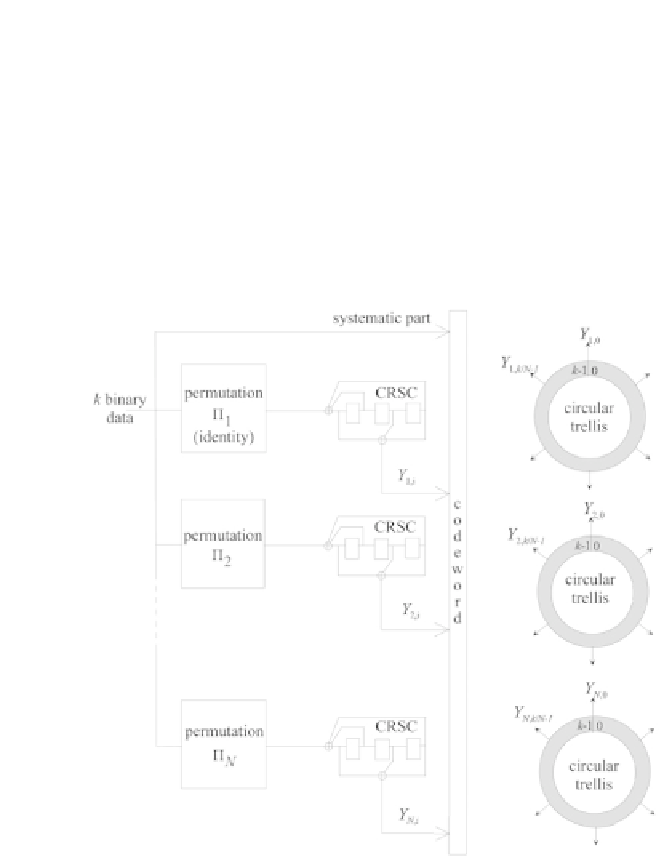Cryptography Reference
In-Depth Information
first baptized turbo-code, with a hyphen to show that it was a code decoded in
a turbo way (by analogy with the turbo engine that uses exhaust gas to increase
its power). As the hyphen is not used much in English, it became
turbo code
,
that is, a "turbo" code, which does not mean very much. In French today, turbo
code is written as a single word:
turbocode
.
7.2
Multiple concatenation of RSC codes
Figure 7.2 - Multiple parallel concatenation of circular recursive systematic convo-
lutional (CRSC) codes. Each encoder produces
k/N
redundancy symbols uniformly
distributed on the circular trellis. Global coding rate: 1/2.
Since the seminal work of Shannon, random codes have always been a ref-
erence for error correction coding (see Section 3.1.5). The systematic random
coding of a block of
k
information bits, leading to a codeword of length
n
,can,
as the first step and once for all, involve drawing at random and memorizing
k
binary markers containing
n
−
k
bits, whose memorization address is denoted
i
(
0
1
). The redundancy associated with any block of information
is then formed by the modulo 2 sum of all the markers whose address
i
is such
≤
i
≤
k
−



